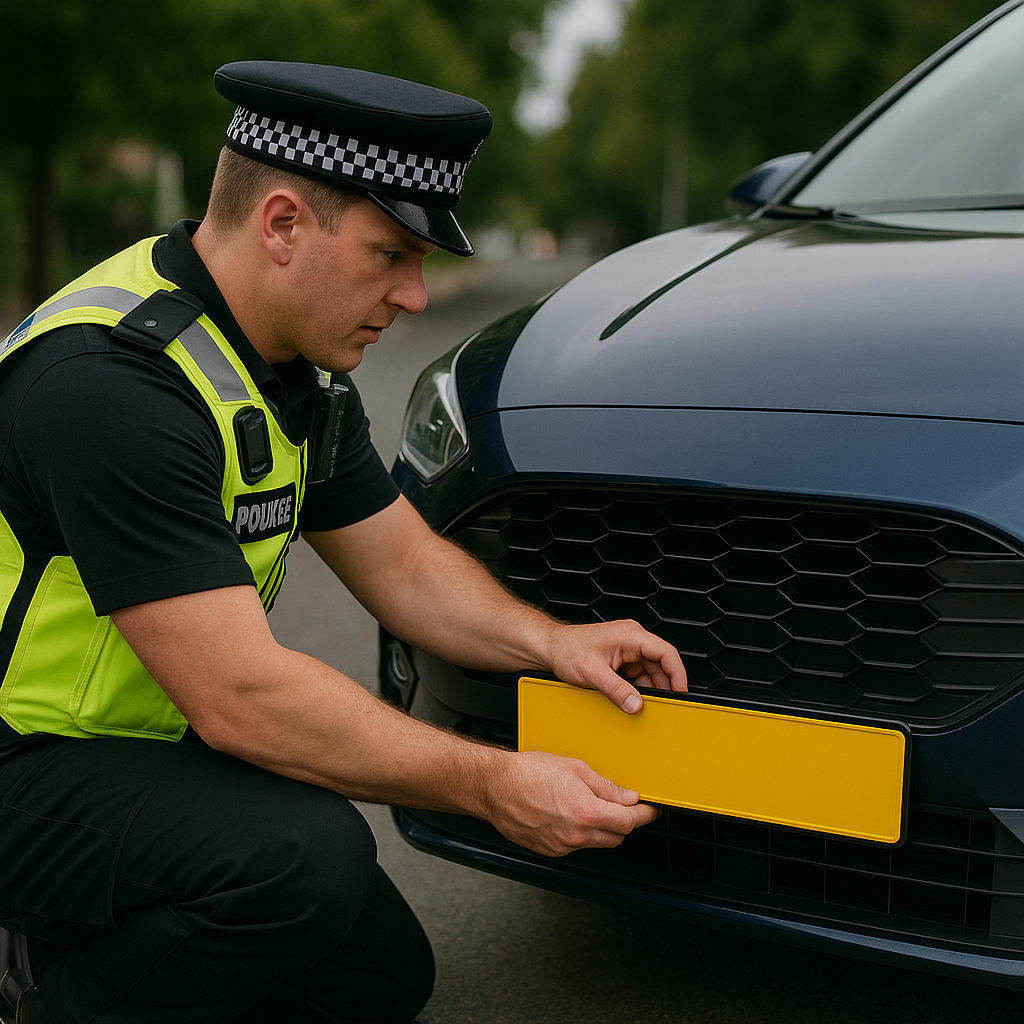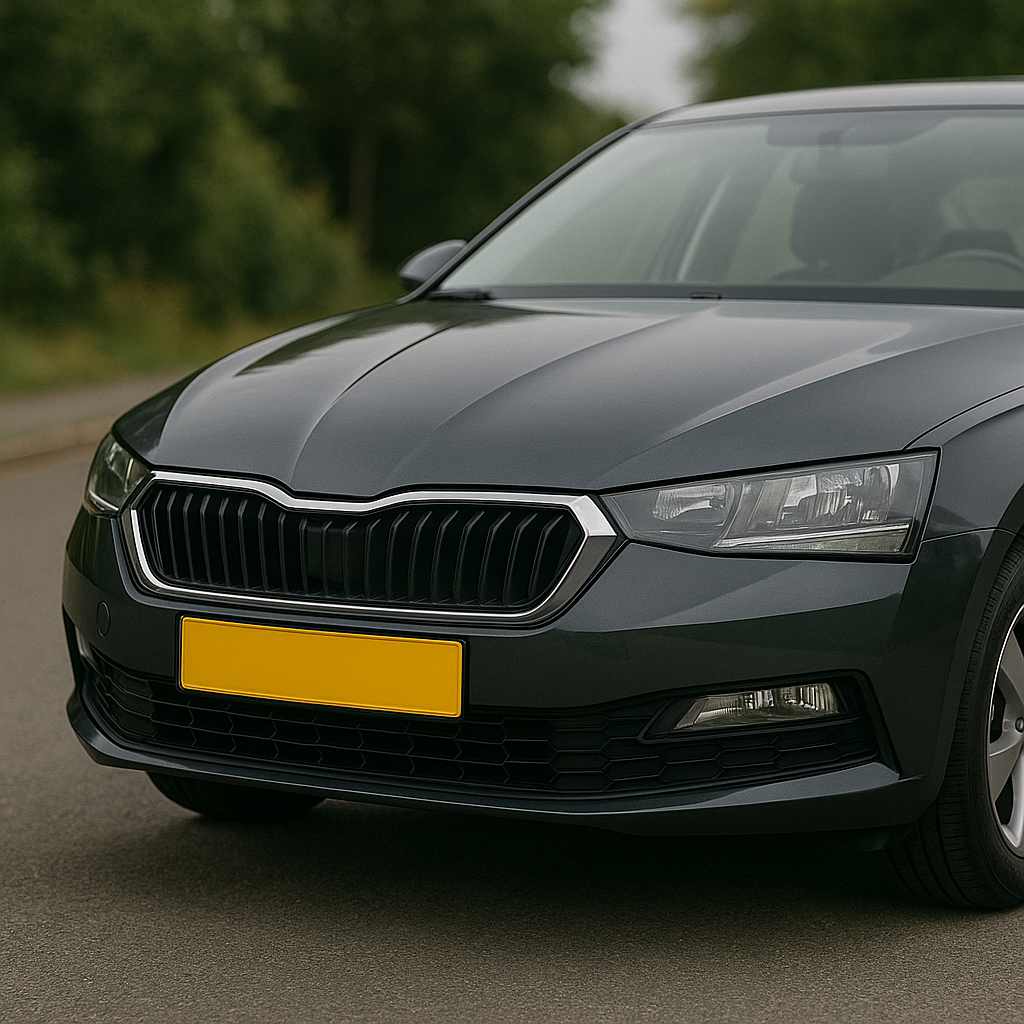You’d think a number plate wouldn’t cause much fuss – but the front one often does. Some drivers aren’t sure if it’s actually needed, especially if it messes with the look they’re going for. Others have heard certain vehicles are exempt.
So, is it illegal to drive without a front number plate in the UK? Or are there times when it’s allowed? This article clears up the confusion, outlines the rules, highlights the exceptions, and explains the consequences.
Whether you’re modifying your car or just unsure, staying legal could save you a fine – or worse.
Legal Requirements for Number Plates in the UK

In the UK, most vehicles must display a number plate at the front and back. The front plate must be white with black characters, while the rear plate needs to be yellow with black characters. This contrast helps visibility, especially for ANPR systems and in poor weather.
Legal requirements go further than just colour. The size, font, and spacing of the characters are all set by law. Change any of these, and the plate could be classed as non-compliant.
There are a few exceptions. Motorcycles only need a rear plate, and some imports or historic vehicles follow different rules, which we’ll look at next. For everyone else, both plates are a legal must.
Why Vehicles Have Front and Rear Plates

So, why bother with two plates at all? Well, it’s less about looks and more about function. Having plates at both ends makes it easier to identify a vehicle from any direction, which helps with a fair few things.
For starters, it supports ANPR (Automatic Number Plate Recognition) systems that scan passing vehicles for everything from insurance checks to locating stolen cars. It also helps police officers or witnesses quickly clock a vehicle’s identity from the front or the rear.
There’s a knock-on effect for safety too. After an accident, front and rear plates can help speed up claims or investigations. And let’s be honest – knowing a vehicle’s more traceable might just make someone think twice before doing anything dodgy on the roads.
Exceptions to the Front Number Plate Rule
Most vehicles need a front number plate – but there are a few clear exceptions.
- Motorcycles only require a rear plate. There’s no suitable space on the front, and it’s been that way for years.
- Certain imports may not have enough room on the front bumper to fit a standard plate. In these cases, the DVLA might approve an exemption.
- Historic vehicles, typically registered before 1 January 1980, can qualify for “historic” status. Some may be allowed to go without a front plate, depending on DVLA criteria.
That said, you can’t just remove the plate and hope it’s fine. If your vehicle falls into any of these groups, you’ll need to show the right documentation. Formal DVLA approval is usually required – without it, you’re likely breaking the law.
Rules for Classic and Imported Cars
Classic and imported vehicles follow slightly different number plate rules – but they’re still rules, and they still matter.
Cars registered before 1 January 1980 may qualify for historic status through the DVLA. If approved, they can use black and silver plates instead of the standard white and yellow. In certain cases, these vehicles might also be exempt from needing a front plate – though only if the DVLA confirms it.
Imported vehicles, particularly those with smaller or curved bumpers, may be allowed custom-sized plates to suit the design. Again, this isn’t based on preference – it comes down to what the DVLA permits.
For both classic and imported models, proper documentation is essential. Without DVLA recognition, using the wrong plate size, style, or layout can still lead to fines.
Penalties for Not Displaying a Front Number Plate
If your vehicle’s supposed to have a front plate and it doesn’t – whether it’s fallen off, been removed, or just isn’t there – you’re risking more than a few raised eyebrows.
You could get hit with a fixed penalty notice on the spot, usually up to £100. It might not sound like much, but depending on the situation, things can escalate. The offence could be recorded, which may cause issues with your insurance or your next MOT.
And if the plate's been altered in any way – different font, squashed spacing, or cheeky designs – that can also trigger enforcement. Repeated issues or refusal to sort it might lead to further legal action. It’s really not worth it for the sake of style points.
Can You Legally Remove or Modify Your Front Plate?
Unless your car fits one of those very specific exceptions, the answer’s simple: no, you can’t legally take your front plate off. It doesn’t matter if it spoils the look – if the law says it’s needed, then it has to be there.
Modifying it? That’s risky, too. Playing around with the font, spacing, or size might seem minor, but it can make the plate unreadable to police or ANPR systems – and that’s where the problems start. Even if the plate looks readable to you, if it doesn't meet DVLA standards, it’s classed as non-compliant.
To stay on the right side of the law, use a DVLA-registered supplier. They’ll follow the official template, and you’ll get a plate that’s both legal and looks clean. Anything else could lead to fines, MOT failures, or even being pulled over.
So, do you need a front number plate in the UK? In most cases – yes, absolutely. If your vehicle is legally required to have one and it’s missing, you’re running the risk of fines, MOT problems, and unwanted police attention.
That said, there are a few exceptions – mainly for motorcycles, classic cars, and some imports. But you’ll need the right paperwork or DVLA recognition to back that up.
If you’re ever unsure, it’s best to check directly with the DVLA or refer to our plate builder to understand how to build a legal number plate. Remember, it’s better to stay compliant now than deal with a fine later.
